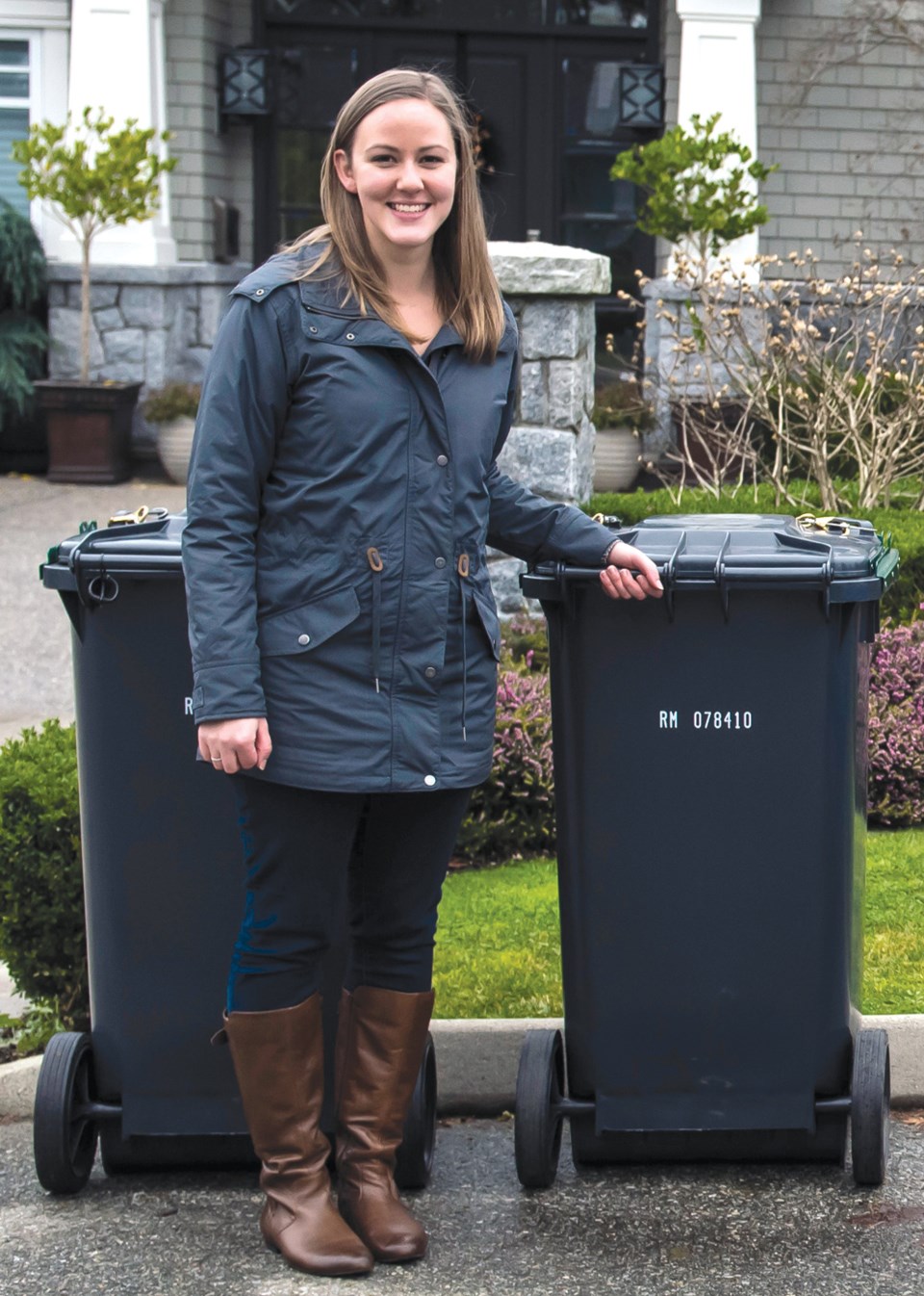Look around you, out your window or back door. Hear the birds chirping in the trees. See the babbling brook as it cascades through the forest. We live in a natural paradise, free of smog.
In the Seymour area, and across the North Shore, residents pride themselves on protecting the environment and the natural spaces they live and recreate in.
We now challenge them to walk the talk. How much household waste can you recycle and ultimately divert from the landfill?
The District of North Vancouver will soon be offering residents a financial incentive to recycle. In the coming months the district will be issuing new garbage carts with the size relative to the type of residence, townhouse or detached home.
But you have the option to upsize or downsize that cart one time for free.

Here’s the catch: 2018 fees for garbage collection (utility rate) will be based on cart size. In this case, smaller is better.
So it’s time to get creative. Perhaps turn to Pinterest for inspiration.
Use old wine or beer bottles as a candle holder. Instead of tossing those thoughtful Christmas cards from your loved ones or optometrist, turn them into an ornament. The possibilities are endless.
Also consider what household items and clothing can be donated to charity. There are plenty of donation boxes scattered throughout the Seymour area, including at Parkgate Village and at the fire hall on Mount Seymour Parkway.
The district is rolling out these new garbage and organic carts – which are locking, by the way, to keep wildlife out – to meet Metro Vancouver’s goal to recycle 80 per cent of the region’s waste by 2020.
It’s time to think twice before throwing out that recyclable takeout container or any leftovers inside.
As it stands, garbage arriving at the transfer station containing 25 per cent food scraps is subject to a 50 per cent surcharge on the tipping fee, which we ultimately pay.
Starting July 2017, this threshold will be lowered to just 5 per cent permissible organics in garbage.
You might not realize that most food scraps can go in the green can: dairy products, including cheese and yogurt, egg shells, fruits and vegetables, meat, fish, bones and seafood shells, noodles, rice, beans, grains, bread and pasta, as well as teabags and coffee grounds.
Maybe keep a list in the kitchen to help remind family members on dish duty to think green before they scrape.
Walkmans and Discmans hiding in your junk drawer are relics of the past that are ready for their afterlife. Keep an eye out for pop-up electronics recycling events, like the one Blueridge Community Association hosted last spring.
Ultimately, it’s up to all of us to pitch in to preserve our natural environment, and perhaps save a buck or two in the process.
What are your thoughts? Send us a letter via email by clicking here or post a comment below.


